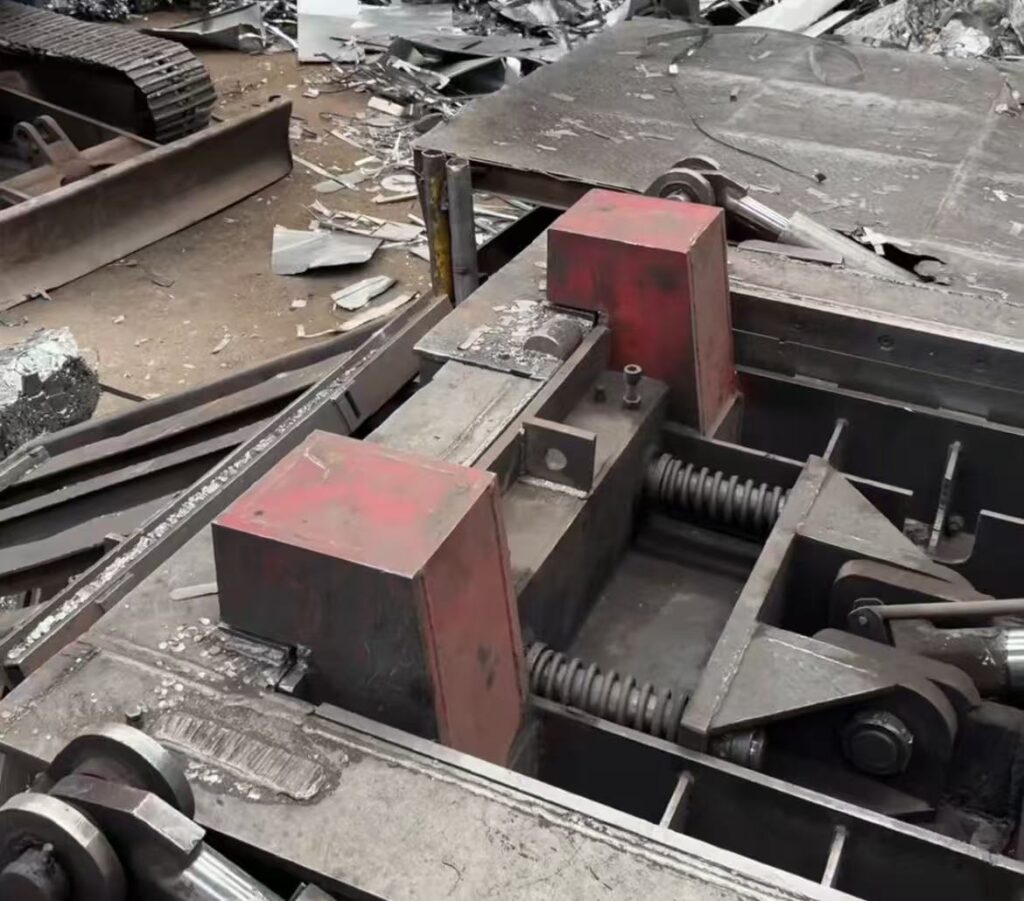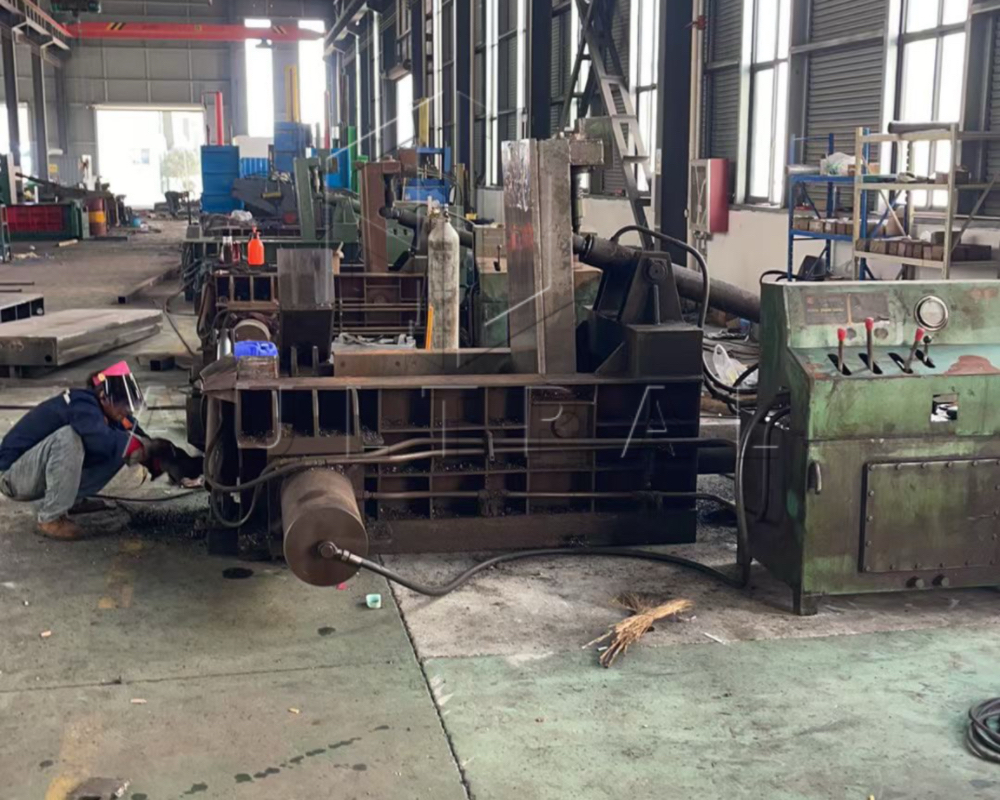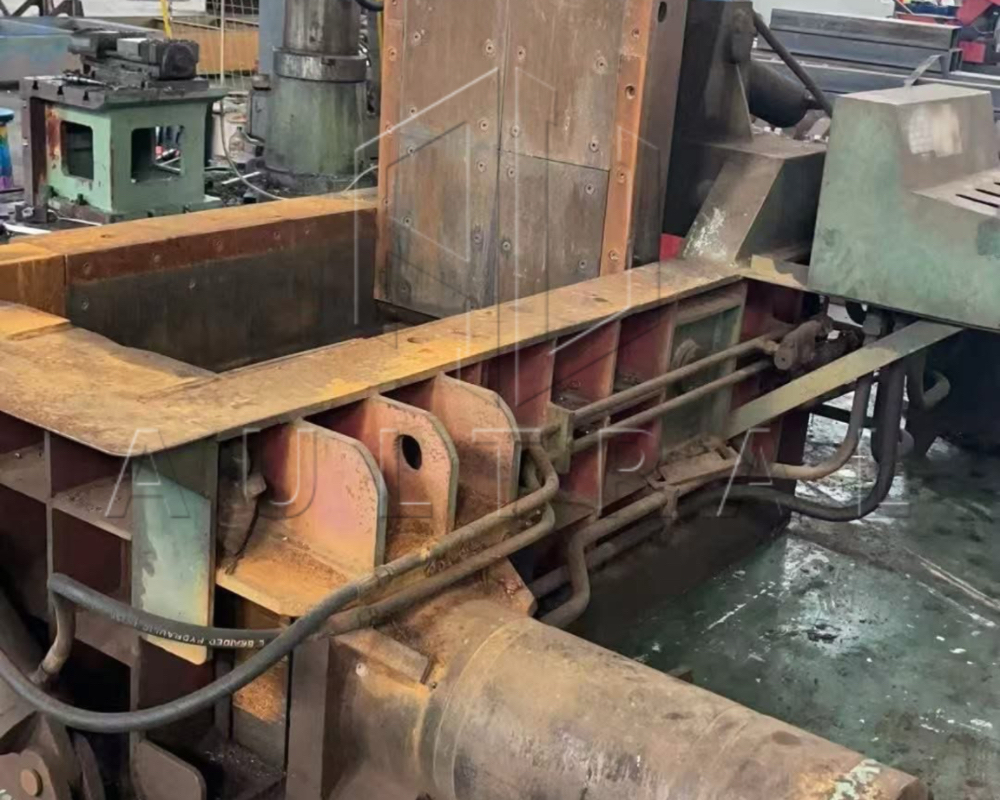Why Choose A Used Horizontal Metal Baler Machine

Purchasing a used horizontal metal baler machine is a practical choice for many recycling and manufacturing businesses. The main reason is cost efficiency. A second-hand baler can perform almost the same functions as a new one but at a fraction of the price. For small and medium-sized companies, this significantly reduces the initial investment cost.
Another advantage is faster availability. New balers often require long production or shipping times, while used equipment is usually available for immediate delivery. This allows factories to start operations quickly without waiting months for a new machine.
Additionally, used horizontal metal balers from reputable suppliers are often refurbished and tested before resale. This ensures reliable performance and safety, extending the service life of the equipment while maintaining excellent compression power and operation stability.
Finally, buying a used baler supports sustainable production. Reusing machinery reduces waste, energy consumption, and carbon emissions, aligning with the environmental goals of modern industries.
How To Use A Used Horizontal Metal Baler Machine

Operating a used horizontal metal baler machine is straightforward, especially for those familiar with recycling equipment. Here are the key steps for safe and efficient operation:
-
Preparation
Before starting the machine, check the hydraulic oil level, power supply, and safety switches. Make sure the working area is clean and free from any obstructions. -
Feeding The Material
Load metal scraps—such as aluminum, steel, copper, or iron—into the feeding chamber. Depending on the model, the feeding can be manual or automatic through a conveyor system. -
Compression Process
Start the hydraulic system and allow the pressing plate to move forward. The machine compresses the loose metal materials into dense rectangular or square bales. -
Bale Ejection
After compression, the bale is automatically or manually pushed out from the rear or side. The compacted bales are then easy to stack, transport, or sell for recycling. -
Regular Checks During Operation
Always observe pressure gauges, noise levels, and hydraulic performance. Stop the machine immediately if there are any irregularities.
Following the manufacturer’s manual is essential to ensure safe operation and long-term efficiency.
How To Maintain A Used Horizontal Metal Baler Machine
Proper maintenance is the key to keeping your used baler in excellent working condition. Here are several important maintenance practices:
-
Hydraulic System Maintenance
Regularly check the hydraulic oil for cleanliness and viscosity. Replace it every 3 to 6 months or according to the supplier’s recommendation. Inspect hoses and fittings for any leakage or wear. -
Lubrication
Lubricate moving parts such as chains, cylinders, and sliders to reduce friction and prevent rust. Always use the recommended lubricants. -
Electrical System Inspection
Ensure all cables, switches, and sensors are functioning correctly. Replace damaged wires immediately to prevent short circuits. -
Cleaning And Dust Removal
Metal dust and oil residue can accumulate over time, affecting performance. Clean the chamber, hopper, and exterior surfaces frequently. -
Regular Testing
Perform periodic testing of the compression pressure, cylinder movement, and ejection system to confirm consistent performance.
By performing routine maintenance, you can extend the machine’s lifespan, minimize downtime, and reduce unexpected repair costs.
Applications Of Used Horizontal Metal Baler Machines
Used horizontal metal balers are versatile and suitable for a wide range of industries. Their strong compression capability makes them ideal for managing large volumes of metal waste efficiently. Here are some common application scenarios:
1. Scrap Metal Recycling Plants
Recycling plants use horizontal metal balers to compress scrap steel, copper, and aluminum into uniform bales. This reduces storage space, simplifies transportation, and increases recycling profits.
2. Metal Processing Factories
Manufacturers that produce metal components often have leftover scraps. A used horizontal baler helps them recycle waste materials directly, improving resource utilization and maintaining a clean working environment.
3. Automotive Dismantling Yards
Auto recycling yards generate large quantities of metal parts and car shells. Using a used horizontal baler allows them to compress bulky materials efficiently, reducing logistics costs and improving recycling efficiency.
4. Foundries And Smelting Plants
These facilities need dense, consistent metal bales for melting and remanufacturing. A used baler ensures uniform density, which helps maintain smelting efficiency.
5. Small And Medium-Sized Enterprises
SMEs with limited budgets can benefit greatly from a used machine. It provides reliable compression performance without the high cost of new equipment, helping businesses expand production capacity economically.
Tips For Buying A Reliable Used Horizontal Metal Baler
When purchasing a second-hand machine, careful inspection is essential. Consider the following tips:
-
Check The Hydraulic Pressure – Ensure the cylinder operates smoothly without leaks or pressure drops.
-
Examine The Frame And Welds – Look for cracks or deformation in the structure.
-
Review Maintenance Records – Request service history to understand how well the machine was maintained.
-
Test The Electrical Components – Verify that the control panel, motors, and sensors function properly.
-
Buy From A Trusted Supplier – Choose a reputable manufacturer or reseller that provides inspection reports and after-sales support.
By evaluating these factors, you can confidently select a used baler that offers long-term value and reliability.
Economic And Environmental Benefits Of Using A Used Baler

In today’s competitive recycling market, controlling operational costs is essential. Choosing a used horizontal metal baler offers a perfect balance between performance and affordability. The depreciation rate of heavy recycling equipment is usually steep in the first few years, which means buyers can obtain high-quality, gently used machines at significantly reduced prices.
From an environmental perspective, reusing industrial machinery is a form of circular economy. It prevents unnecessary manufacturing of new machines and reduces energy and material consumption. Every used baler that finds a second life helps minimize industrial waste and carbon emissions.
Additionally, many suppliers now recondition used balers by replacing worn components, upgrading hydraulic seals, and repainting frames. These improvements often restore the machine’s functionality to near-new condition, offering exceptional value at a much lower investment. For many businesses, this combination of cost savings and sustainability represents the most responsible and profitable way to expand production capacity.
Conclusion: A Practical Choice For Sustainable Production
A used horizontal metal baler machine is not just a budget-friendly solution—it is a smart investment in efficiency, sustainability, and productivity. It helps businesses reduce costs, optimize recycling processes, and meet environmental standards without sacrificing performance.
Whether you run a metal recycling plant, an auto dismantling yard, or a manufacturing workshop, a well-maintained used horizontal metal baler can deliver reliable compression power for years to come.
Choosing the right machine and maintaining it properly will ensure your production line operates smoothly while supporting a cleaner, greener future for the recycling industry.
